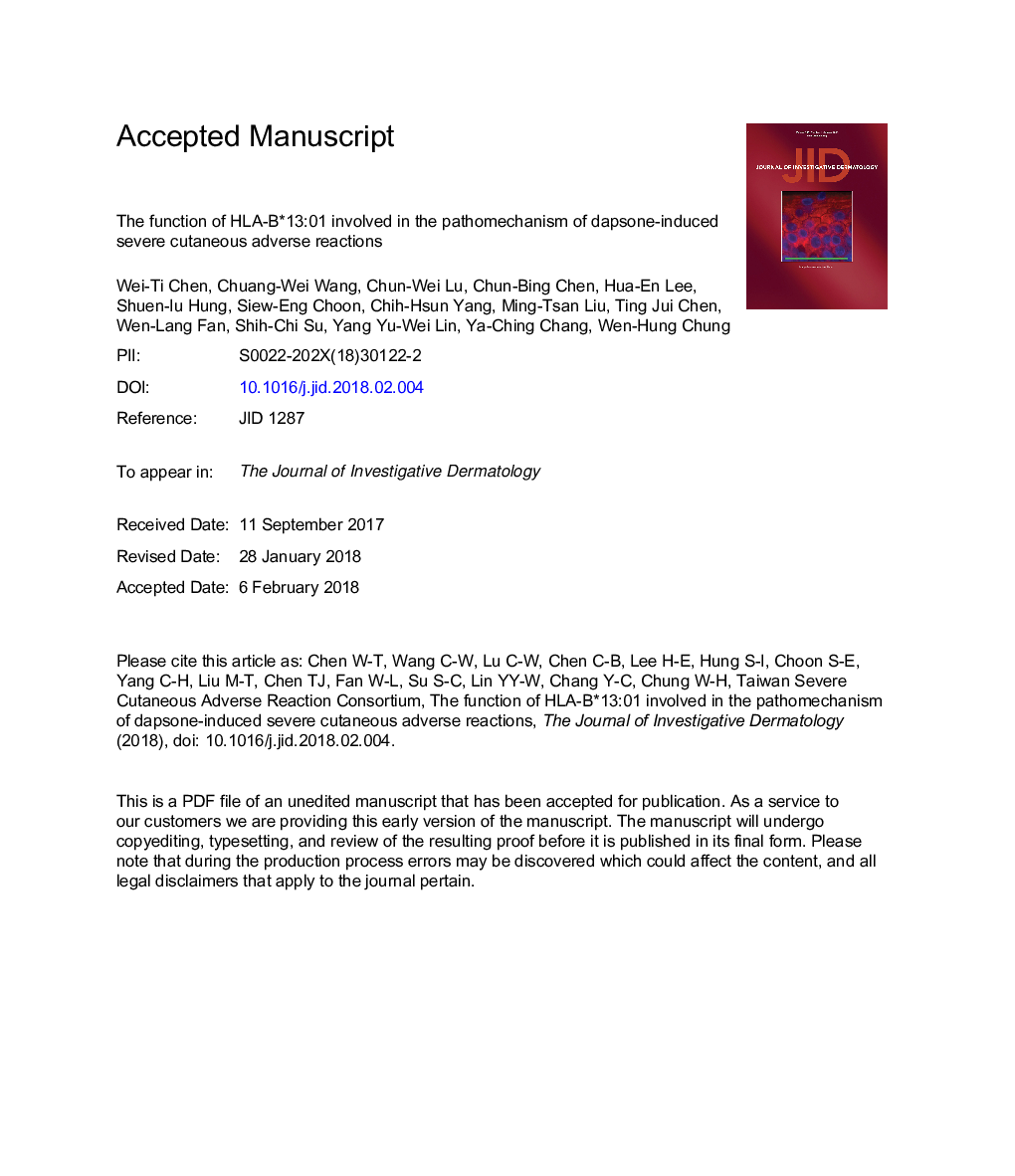| Article ID | Journal | Published Year | Pages | File Type |
|---|---|---|---|---|
| 8715848 | Journal of Investigative Dermatology | 2018 | 36 Pages |
Abstract
Dapsone-induced hypersensitivity reactions may cause severe cutaneous adverse reactions, such as drug reaction with eosinophilia and systemic symptoms (DRESS). It has been reported that HLA-B*13:01 is strongly associated with dapsone-induced hypersensitivity reactions among leprosy patients. However, the phenotype specificity and detailed immune mechanism of HLA-B*13:01 remain unclear. We investigated the genetic predisposition, HLA-B*13:01 function, and cytotoxic T cells involved in the pathogenesis of dapsone-induced severe cutaneous adverse reactions. We enrolled patients from Taiwan and Malaysia with DRESS and maculopapular eruption with chronic inflammatory dermatoses. Our results showed that the HLA-B*13:01 allele was present in 85.7% (6/7) of patients with dapsone DRESS (odds ratio = 49.64, 95% confidence interval = 5.89-418.13; corrected P = 2.92 à 10-4) but in only 10.8% (73/677) of general population control individuals in Taiwan. The level of granulysin, the severe cutaneous adverse reaction-specific cytotoxic protein released from cytotoxic T cells, was increased in both the plasma of DRESS patients (36.14 ± 9.02 ng/ml, P < 0.05) and in vitro lymphocyte activation test (71.4%, 5/7 patients) compared with healthy control individuals. Furthermore, dapsone-specific cytotoxic T cells were significantly activated when co-cultured with HLA-B*13:01-expressing antigen presenting cells in the presence of dapsone (3.9-fold increase, compared with cells with no HLA-B*13:01 expression; P < 0.01). This study indicates that HLA-B*13:01 is strongly associated with dapsone DRESS and describes a functional role for the HLA-restricted immune mechanism induced by dapsone.
Keywords
MPEMaculopapular eruptionSJSHHVELISPOTPBMCCTLsEnzyme-linked immunospot assayEBVSCARtenLATPeripheral blood mononuclear cellcytotoxic T cellsStevens-Johnson syndromeSevere cutaneous adverse reactionsDRESSToxic epidermal necrolysisdrug reaction with eosinophilia and systemic symptomsEpstein-Barr virusHuman herpesvirus
Related Topics
Health Sciences
Medicine and Dentistry
Dermatology
Authors
Wei-Ti Chen, Chuang-Wei Wang, Chun-Wei Lu, Chun-Bing Chen, Hua-En Lee, Shuen-Iu Hung, Siew-Eng Choon, Chih-Hsun Yang, Ming-Tsan Liu, Ting Jui Chen, Wen-Lang Fan, Shih-Chi Su, Yang Yu-Wei Lin, Ya-Ching Chang, Wen-Hung Chung,
